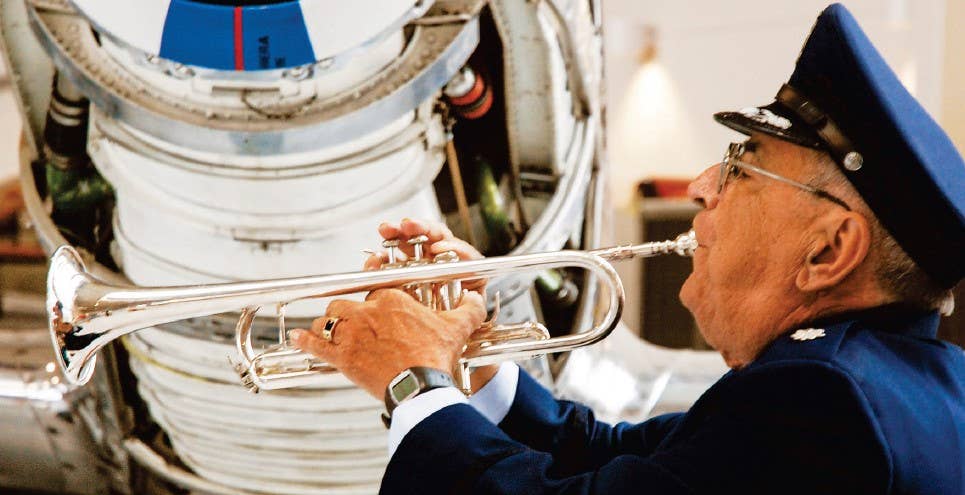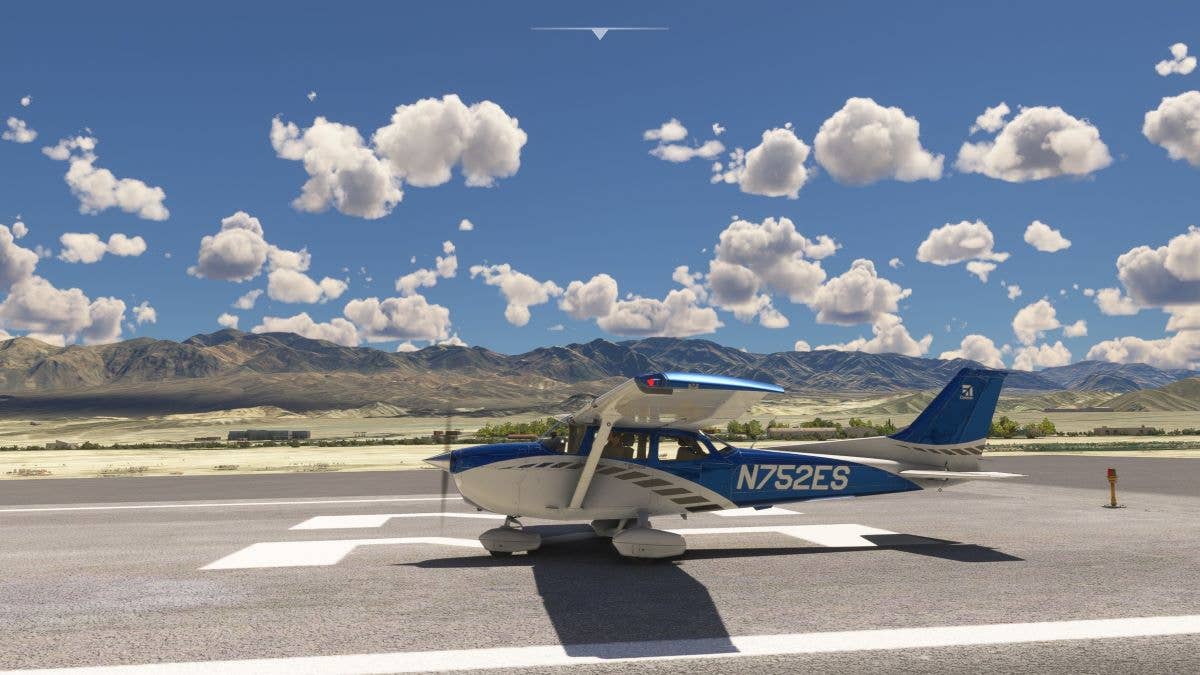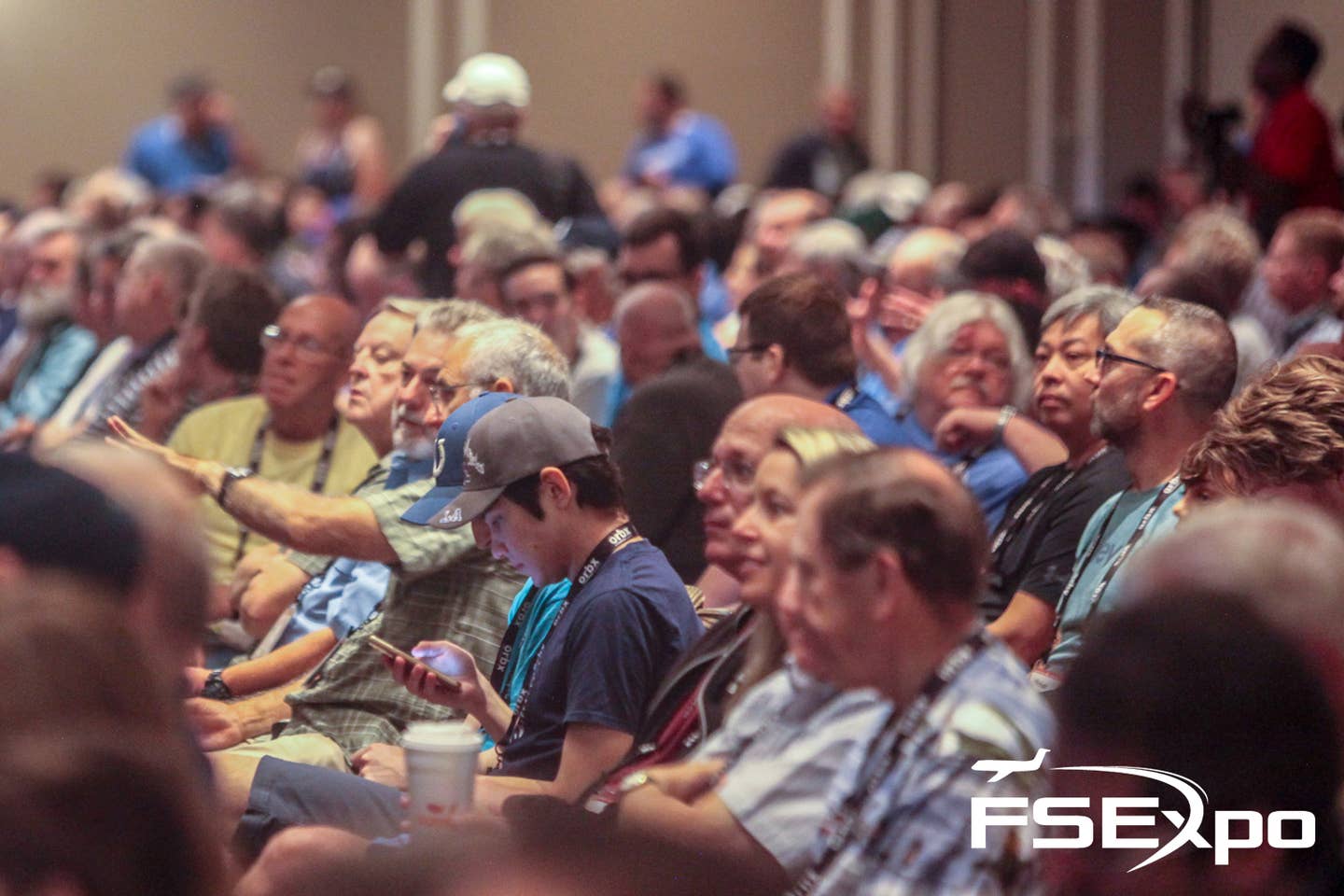Healthy Obsession: What Flight Sim Has Done for Me
Relationship with the virtual aviation world, particularly ‘Microsoft Flight Simulator,’ spans many years.

FLYING contributor Peter James became with PC flight simulators at an early age. [Courtesy: Peter James]
In 1981 when the first Microsoft Flight Simulator was born, I was a young teenager—the spirit of adventure and realism of flight hit me like a storm. Suddenly, my intense model railroad hobby, complete with a huge basement layout, took a back seat. This technical marvel, hosted on this heavy, metal box of a newfangled PC, captured my heart and imagination forever. I wonder if my parents were grateful for this weekend “babysitter” as my dad hauled his computer home from his office for me to play with on Friday nights. It certainly kept me home and out of trouble, with no mischief or calls from the local police late at night.
I was obsessed. Once college approached, I knew I was going to become an airline pilot, and I wouldn’t stop until I was an old man flying a Boeing 747. I was originally going to go to college to become a TV meteorologist, but failing grades in math kept that dream far away. I found it much easier to get into a state college with an aviation program, so off I went to one in New England to become a pilot.
If you're not already a subscriber, what are you waiting for? Subscribe today to get the issue as soon as it is released in either Print or Digital formats.
Subscribe NowWhile earning all my primary ratings, private through commercial and CFII, Microsoft Flight Simulator was right there with me. It provided all I needed for that extra boost when studying ILSs, holding patterns, VOR tracking, stalls, slow flight, cross countries, and more. Once the newer versions of MSFS were released (these major new versions were anticipated and sold in PC software stores in malls back then), it would cause so much excitement and anxiety for me that I’d be prepared to drive hours to get the coveted box in hand before the stores ran out, or other friends I knew grabbed theirs. Then the worries over computer strength and how the new version would run upped the anxiety. But it was a fun time back then, one that blew past any young child’s Christmas morning memory on any new release day.
After acing my IFR rating (the CFIs never understood how I knew all this stuff prior to beginning flying), my next big “ace event” was years later during my first real job as a Cape Air captain flying a nine-seat Cessna 402. I had to go for weeks of indoc and training, and my monthlong-stay hotel room was filled with some great multiengine hardware. Throttle quadrants, rudder pedals, and all were a fixture in my small room along with the PC. Today, I highly recommend the Sporty’s Pilot Shop Flight Sim Starter Set—quality Honeycomb equipment—or FLYING’s custom rig.
Some fellow classmates came to observe or try engine failures in a Cessna 421 add-on, the closest thing we had to the lower-powered 402. But it all worked and made sense. My multiengine failures and a simulated ATP check ride—complete with many single-engine NDB approaches to minimums in the real airplane—all seemed easy to me as I was able to fly all this before. The heck with imaginary “armchair flying”—I had the real thing in my hotel room as far as I was concerned.
Years later, once again another big event was my initial type rating in my first jet—the Beechjet 400A—in Wichita, Kansas. Most folks get a full initial type school of more than three weeks for most bizjets. However, my Part 135 boss was a cheapskate (imagine that) and wanted me typed within a four-day recurrent session the other pilots get every year. That was a lot to accomplish. The instructors said they didn’t think I could do it, as nobody gets a type off a recurrent session. And since it was my first jet rating, I had to take the four-day FMS ground training event as well.
Learning an aircraft FMS is the hardest thing for new jet pilots, and I had no time to learn it. Well, I said let me try the sim and see how I do in the FMS. I had a secret weapon nobody knew about. I had been using an FMS for years in MSFS, thanks to PMDG (www.PMDG.com), the makers of the finest Boeing airliners for the sim platform. Once I was in the real Beechjet sim, I discovered, sure enough, the FMS is exactly like the one in the Boeing jets. Even the glass cockpit was similar. The instructors were dumbfounded as to how I could suddenly bang away at all the keys, programming and modifying all the while learning to fly the jet. I let the cat out of the bag and told them, thanks to me being a geek on MSFS, I had learned all this years ago. They’re reaction was “no way” … but I was told to go ahead and skip the FMS course. I got my type rating in four days!
There was a fairly good Beechjet add-on for MSFS2004 made by Eaglesoft, and I used it during this training event and subsequent recurrents as I became a captain for the 135 outfit I flew with for several years before getting a new type rating on a big, beefy Dassault Falcon 2000 eventually. Sadly, no Falcon products existed for any sim platform, so I was a bit overwhelmed during that initial type rating. But, as most flying jobs change, so did this one. I was suddenly changing jobs and getting typed in a Hawker 800 series—a bit of a step back from the big Falcon.
Now, once again I had the sim advantage as one did exist from designer Carenado (www.carenado.com). The Hawker 850 was out for MSFSX at the time, and it was excellent in preparing me for the overall layout, look, and feel for learning the cockpit. However, it was not too big on exact systems modeling, so I used it as more of a visual familiarization tool than anything else, as well as for some basic flying qualities I believed were probably modeled pretty well.
Soon that 135 job ended, as those old 800s were poorly maintained and most flights were an exercise in using the emergency section of the POH. So I quit, only to find a job flying a much newer, late model Hawker 850, exactly as I had in MSFSX. This was a hoot. The newness and power was so much greater than the older sister. But that new boss suddenly traded in the 850XP for a big, powerful Challenger 300. This was the pinnacle of my career back then, and I had yet another sim weapon—the incredible Challenger 300 for X-Plane 11.
This favorite of many was sadly discontinued years ago, but I used it to the fullest extent while it was available. Systems, operations, layout, and flying quality were all simulated. I became extremely familiar with the CL300 during this time, and once I was type rated and flying the real thing, I became a reviewer of the X-Plane version. I was even able to help the author a bit on tweaking some parameters to better equal the real jet.
But the more I flew the real thing, the more I realized how well done the X-Plane version really was. I used to think it was too powerful, easily performing initial climb rates hitting 10,000 fpm, then I found out, yes, indeed the real thing does it too. What a ride!
Now that sims have helped me learn the real aircraft I fly, what about other stuff? How about life and death? Through no fault of my own, or perhaps a clumsy error, or maybe being even wreckless a bit while flying on the PC, I have found myself in sudden potentially dangerous scenarios that require immediate thinking and problem solving. I often leave the airplane on autopilot to do other things but have returned on a few occasions to discover one or more engines have failed for some reason. In jets it could be because of high-altitude weather, lack of anti-icing items being used, or other issues. Now I must think and react as a real pilot.
Even without a checklist at hand, it’s a brain exercise that is nothing but beneficial. So in a way, that is an actual emergency not planned at all and definitely a surprise. In smaller airplanes I have experienced total loss of power, so a visual landing off airport is an incredible “big picture” situational awareness type of tool that’s very realistic. I have written about such emergencies in past issues of FLYING’s digital platform.
Actual live weather feeding can provide an unexpected moment. So now, it’s time to dig out approach plates or perhaps attempt a visual with terrain. How about a planned emergency? Sure can. Options in either MSFS2020 or X-Plane 12 (XP12) give you the ability to randomly have a failure of anything you choose at a specific time, keystroke, or random period. XP12 goes farther and gives you the chance of random bird impact and resulting crisis, with hundreds more just waiting for you to activate. During jet recurrent events, we practice multiple engine failures at V1, so that is easily something I’ll do in the sims at home.
Get a friend involved to secretly program something bad to happen. Back when I was a single guy and had a fellow roommate pilot pal (Rob, this is you) whom I taught how to fly, we’d call these randomized, intentional moments of doom “horror flights.” We’d set up the other guy while he wasn’t looking to have to fly the Cessna 182 and have total electrical failures combined with vacuum failure at night. Looking up to see nothing but a turn coordinator to live by is terror in IFR. Use engine sound for rpm and wind noise for pitch. If the outcome was bad, we’d throw each other down the stairs to simulate a crash and resulting injury. This added to the fun and realism. I don’t think any of us really lost too much blood.
I have been to many airfields in the real world where I’ve experienced that “been-there-done-that” feeling. Places like KASE, KTEX, KHSP, KJAC, KVNY, KSFO, KTRK, CYVR, PHLI, and dozens more where, if it weren’t for the sim, I’d be a level behind. Most involve high terrain or odd procedures. My first European trips in the Challenger were done in MSFS or X-Plane. Any new places I know of that I am heading to will be at least seen virtually before going in real life.
Every sim session is educational and keeps the brain in “big picture” mode. SA, or situational awareness, is key. I have flown with so many other pilots that lack this skill or are somewhat always behind the jet. A home simulator keeps these skills sharp. You’re always thinking ahead about “What if…?”
You don’t even need the latest MSFS or X-Plane to do this—or a fancy PC. Any version would do. I’d go as far as to say some of the big picture things can even be accomplished with an air combat sim. If you’re always thinking and doing, planning and preparing with a home flight sim, you’re leaps and bounds ahead of the traditional “armchair” pilot.
Going from class to a hotel room, sitting in a chair with a cockpit diagram in hand, isn’t going to cut it. You’re missing the other half.
This column first appeared in the December 2023/Issue 944 of FLYING’s print edition.

Subscribe to Our Newsletter
Get the latest FLYING stories delivered directly to your inbox







